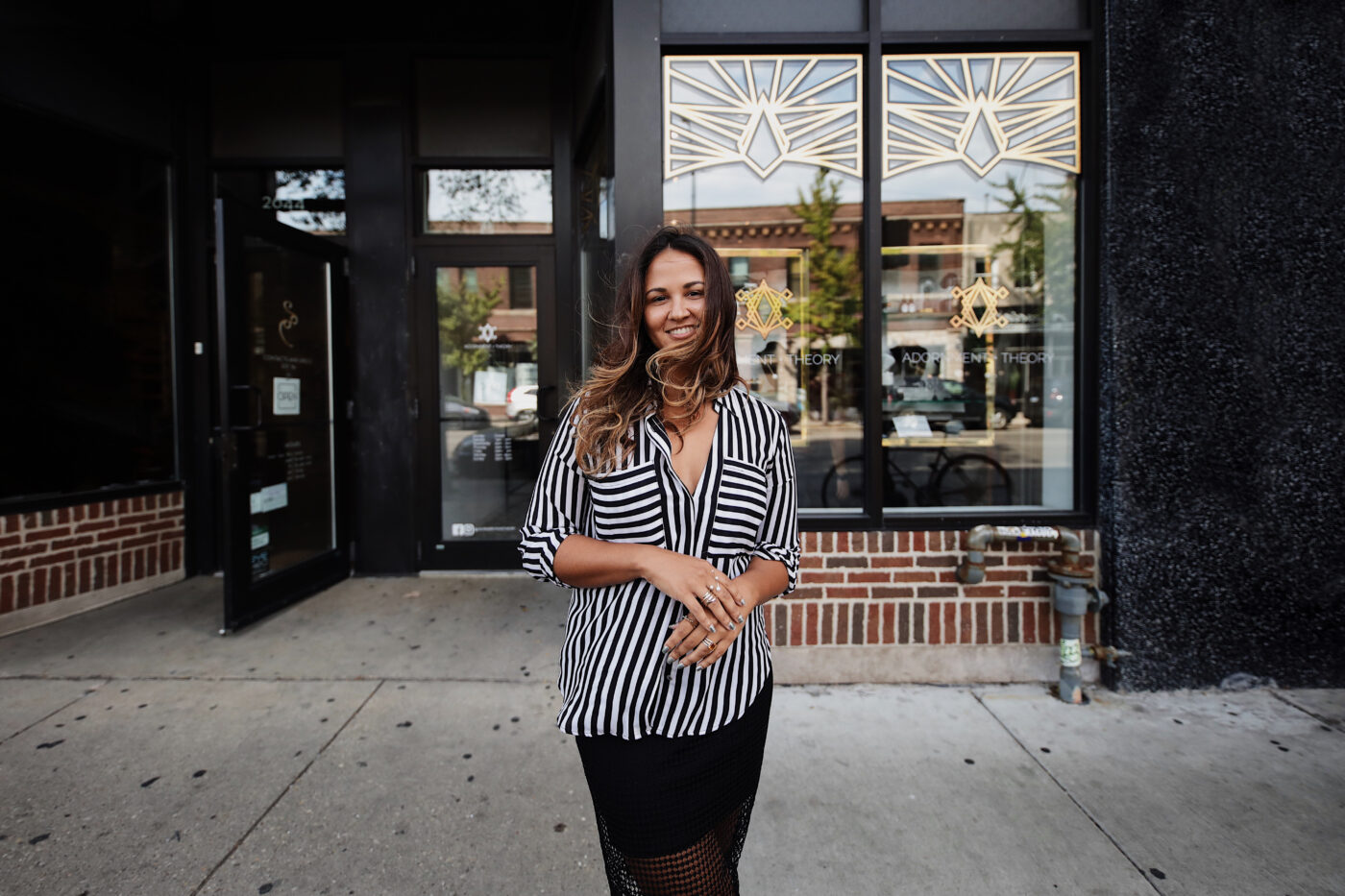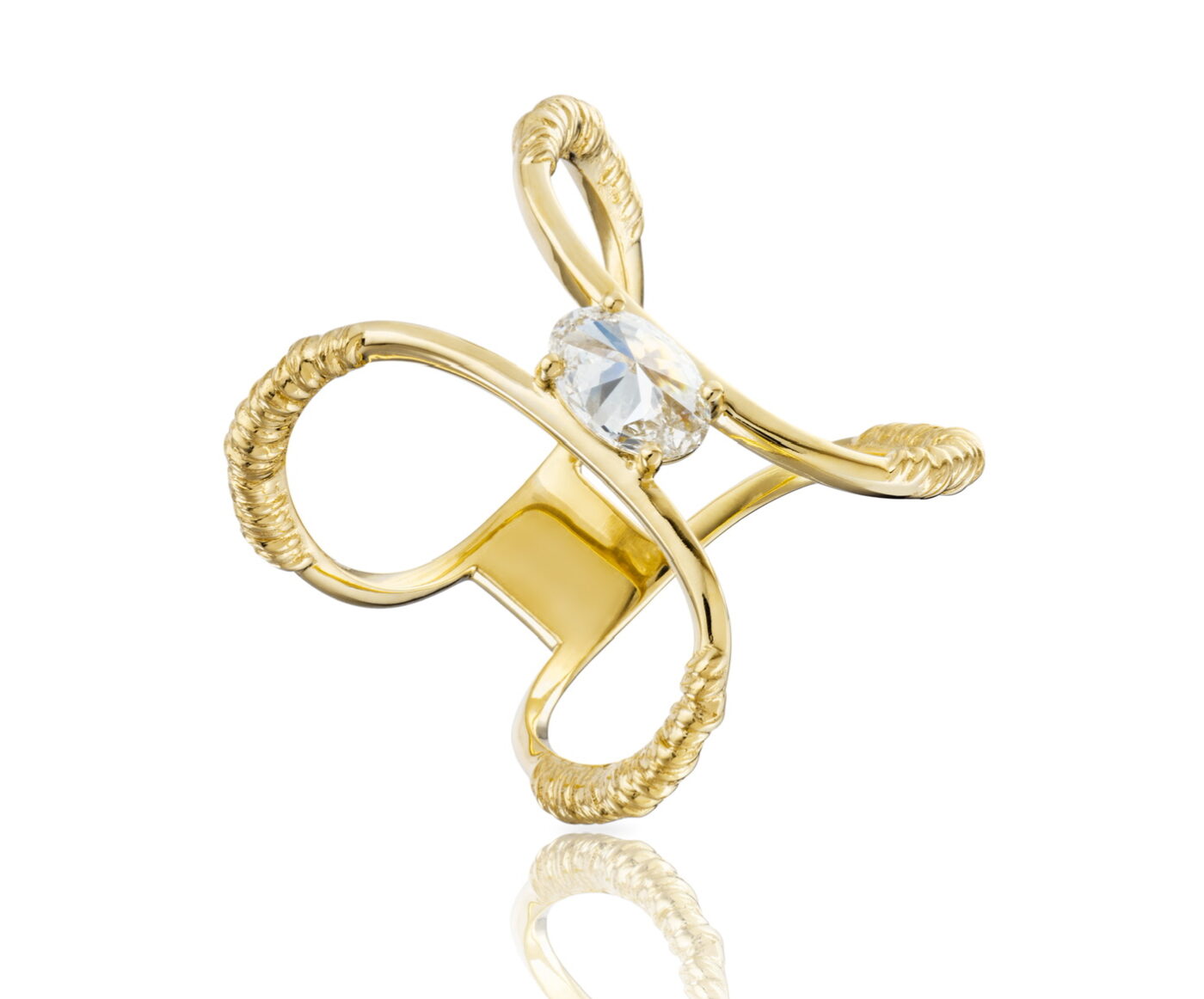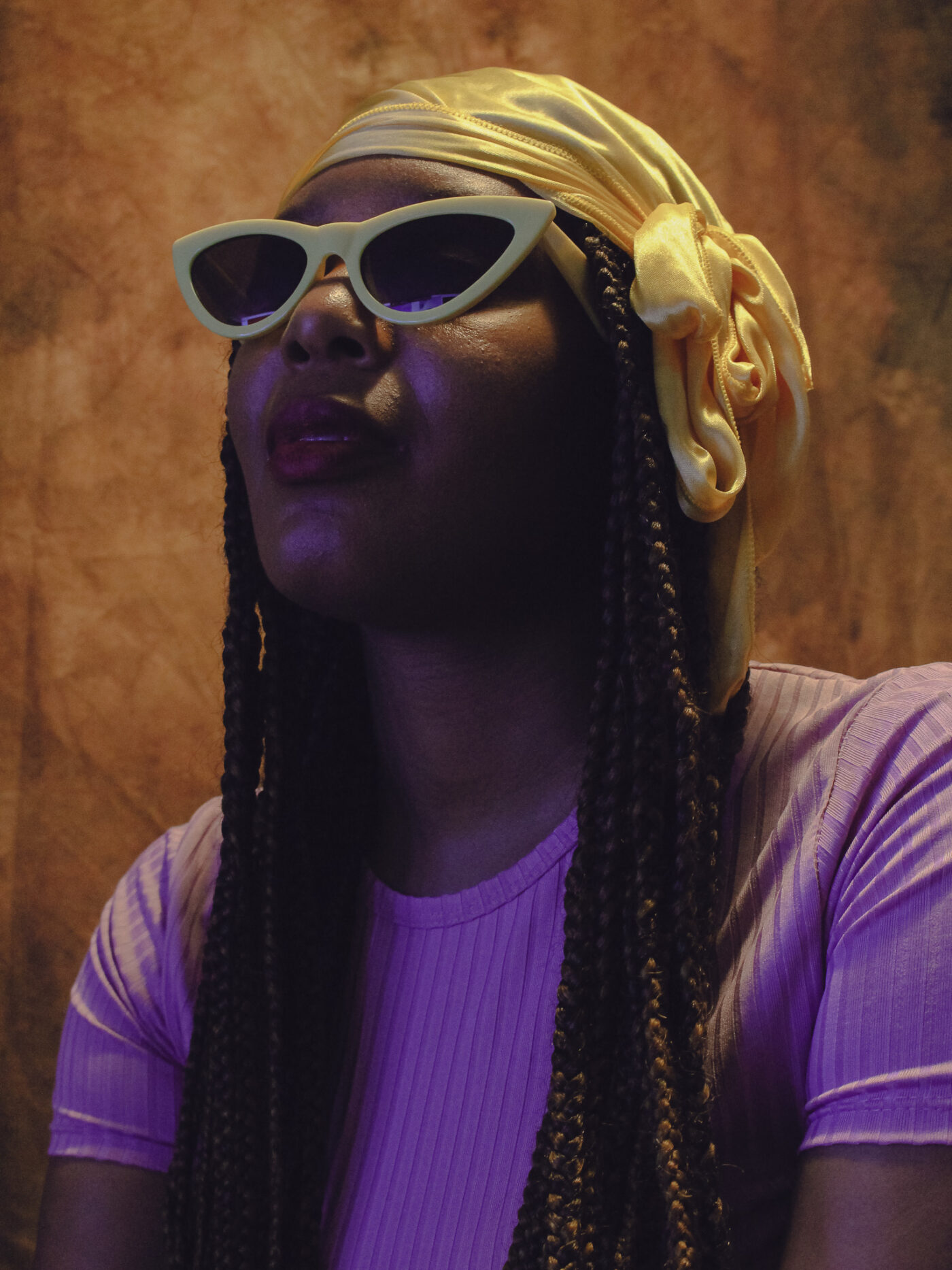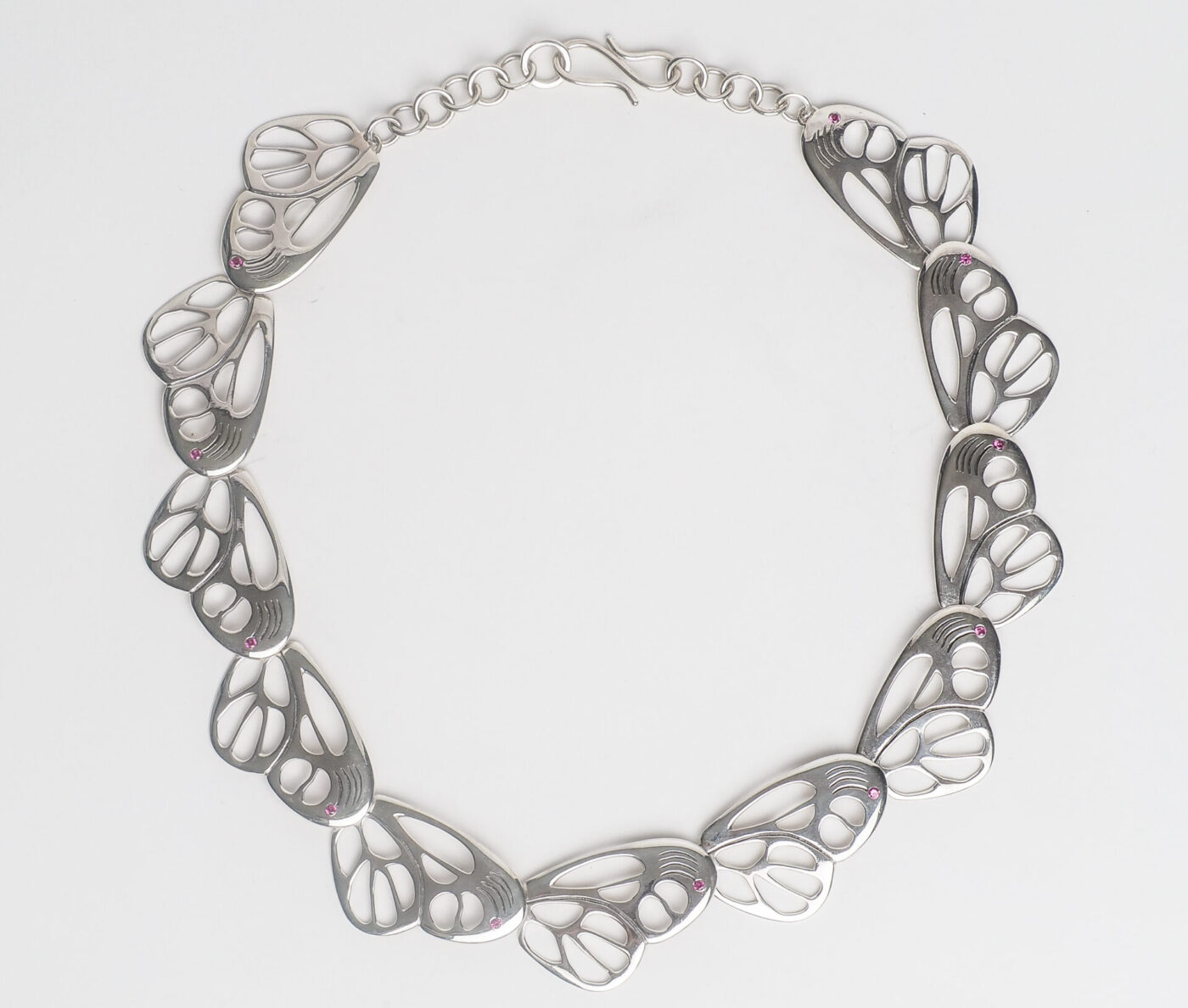NYC Jewelry Week is proud to partner with The RealReal to celebrate the launch of Presley Oldham’s newest collection this November. For their second collection together, Presley Oldham, known for his bespoke, genderless designs, and The RealReal focused on remaking jewelry classics. Using materials from The RealReal that were unfit for sale, Oldham created his take on iconic jewelry styles such as the station necklace and a graduated pearl strand.
In keeping with the theme of this year’s NYCJW, (ICON)ography: Past, Present, and Future, we’re excited to share an interview with the future icon. Presley has been on NYCJW’s radar since launching his line in May of 2020 and last year participated in a panel discussion at NYCJW22 on the intersection of fashion and jewelry. Future Heirloom sat down with the designer, the day after launching his Winter 2023 collection, to get the inside scoop on where he’s coming from and where he’s going.


NYCJW: You launched your jewelry brand in May of 2020- a precarious time- how and why did you decide to do this? Did you always want to be a jewelry designer?
Presley Oldham: My childhood informed my path towards jewelry, so I always find it helpful to share some about my upbringing. My grandma, Linda Oldham, is a large mentor in my life. She is a fine artist, but made jewelry as well when I was a kid. I spent my childhood summers in Santa Fe with her and my grandpa, and every summer felt like an artist retreat. She taught me early on about wire wrapping and different jewelry techniques, among many other things. Beads, wire, and pliers were always around me as a kid, and jewelry making seemed as normal of an after school activity as soccer to me. One of the first pieces I remember making was an emerald pendant necklace for their dog when I was about 8 years old.
The rest of my family were also mentors in their own ways — my dad is a sculptor, my mom is in marketing and my uncle is a fashion designer. I feel really lucky to have grown up in such an artistic family because they all showed me how to run a creative business through their unique lenses. I’ve tried to distill all of that knowledge while building my business and finding my own perspective.
I started making jewelry more frequently about five years ago, as something to do in the evenings after work. I was working in film at the time, and making jewelry was a great tactile alternative to the more ephemeral, drawn-out art form. It was nice to create objects with my hands, and have a project with a distinct start and finish. I launched my brand two months into the pandemic because I was feeling creatively starved. The first collection was made using pearls I’d collected at flea markets over the previous few years, and there were only two or three of each style. It felt more like a one-off project when I launched, but all very natural at the same time. We didn’t know where the world was going in early 2020, and making jewelry gave me an outlet to creatively fuel and focus myself. Thankfully it took off and has now become my main art form, as well as a proper business.


NYCJW: Take us on your design journey… What is your process?
PO: My design process is pretty tactile I’d say. A lot of my inspiration comes from my materials, and I always let them inform the pieces I end up making. Sourcing quality, natural materials is very important to me, and I find a lot of my inspiration on my sourcing trips. Once I have the materials in my hands, I can usually feel what I am going to make with them. I enjoy sketching, but I prefer to just make the piece and let the materials flow through me. That tends to be more of my way of sketching. I find that you have to move with the materials and not force anything. Since I’m wire wrapping and moving bead by bead, sometimes a pearl won’t look the way you imagined and you have to change your plan in the middle of a necklace. I always try to adapt as I create and listen to my instincts.
NYCJW: What does your workspace look like?
PO: My workspace is a balance between minimalism and maximalism — there are a few natural bamboo work tables in the studio that I try to keep as clear workspace. I need an organized and clean space in order to feel creative and work. I have lot of gems, paintings and various collectables across the space that serve as inspiration and pops of color to brighten the day. There are also cork boards that I pin inspiration too, but these are constantly rotating. At the moment, I have all of these antique beaded flowers pinned to the boards as references for some one-of-a-kind pieces that I’m working on. Then of course there are drawers and drawers full of pearls, gems, and beads. These stay pretty organized, except when I’m working on a new collection and they seem to explode and spread across the room.

NYCJW: Your moodboard is filled with ________________ (fill in the blank)
PO: Pictures of beetles and bugs! They are endlessly fascinating and entomology definitely informed my last campaign shoot for the new Winter 2023 Collection.
NYCJW: I recall reading about your launch in Vogue magazine in the spring of 2020. What was that experience like for you? What did it mean to have your story in Vogue?
PO: Having the launch covered by Vogue was very gratifying, and a big step for the business. I definitely never expected that to happen, and it was all very quick — I launched the first week of May 2020 and they covered the collection a couple of weeks later. By the end of the month, my first 30-piece collection had sold out and suddenly I had demand for more.
As I mentioned, that first collection felt very much like a one-off project at the time. I definitely wanted to create a second collection, but it was the very beginning of the pandemic and nothing felt certain at that time. After the Vogue interview, I realized that this was very much a viable business that I could continue to grow and sculpt. Having the backing of an institution like Vogue also gave me a boost of confidence, and reminded me to trust my gut and follow my design instincts. After the interview, I quickly got to work on the second collection that later debuted at NYFW’s first digital season in 2020.


NYCJW: As a designer, you have a zero-waste mindset, so where are the materials for your jewels coming from?
PO: My first two collections in 2020 were much more limited quantities — only two or three of each style of necklace. This was because I sourced the materials from flea markets across the country, and took apart long opera strands of pearls to create new pearl necklaces.
As my company grew, I had to learn how to adjust and expand my quantities. This meant being conscious of how I was sourcing materials and what I was using in my work. Since I can’t always control where the pearl is actually being made, I decided to only work with smaller, local retailers across the Southwest to source my gems. That way, at least I was putting money back into the communities I grew up in. I don’t use any plastics/acrylics in my work (or packaging). I’m also not interested in using uniform/mass produced supplies. I think there is something nice about creating objects in limited quantities, and embracing the irregularity of materials.
The Compost belt is one of my favorite pieces I’ve made, and I think a perfect representation of my brand — opulent, organic, and a touch off-kilter. I set aside the pearls that were too beautiful to use in a simple necklace for a long while, so I had this large bowl of stunning multicolored pearls collecting on my desk. This is where the Compost style was born from — it was about using the supplies I had around me to create something beautiful, utilizing the leftovers in a way. It’s a beautiful necklace, but was also born from a zero-waste mindset.


NYCJW: A pearl necklace is always the centerpiece of your collections – your most iconic piece! Why did you select such a traditional piece of jewelry for that role?
PO: I’ve been drawn to pearls since I started my brand. I love how they’re naturally unique, and the only gem created by another organism. I love the biology behind them — how the pearl forms inside the mollusk as a defense mechanism from a virus invading its shell (this is a research rabbit hole I constantly go down). On a visual level, they’re so striking and come in so many irregular shapes and sizes that I’m endlessly fascinated with what I can find. They’re also the first gems to be worn by humans, and I think their symbolic weight throughout history of being protective and powerful gems adds an interesting texture to using them. Further, it’s fun to rewrite the script around pearls being a ‘feminine’ jewel. This idea only came about in the last 100 years, prior to that they were worn by everyone and seen as a symbol of status. I’m trying to democratize the pearl, and show them on a wide range of people.
Since starting the brand, my goal has been to create beautiful, timeless jewelry that has universal appeal. Genderlessness is a factor in my design process simply because it places the importance on creating a beautiful object. When I launched, I genuinely didn’t think about gender. I shot the first collection on myself (because it was the start of the pandemic), and then I was labeled as making pearls for men. Which is great, don’t get me wrong, but I think that kind of headline reinforces the walls around gendered, traditional jewelry.
I personally don’t think it’s beneficial to gender jewelry or clothing. If you like it and want to wear it, why shouldn’t you? We all have bodies worthy of decoration. Jewelry should be fun, and make you feel more like yourself no matter how you identify.


NYCJW: Your ethos is about bringing handcrafting back to fashion and jewelry, something that we very much endorse at NYCJW… why is this something that you want to see happen?
PO: By bringing handcraft back to the center of fashion and jewelry, we can loosen the industry’s grip on mass production. For me, this begins by thoughtfully engaging with your materials and hand tailoring each step of the production process to best enhance these materials. Brands founded with sustainable practices in mind can utilize thoughtful materials without contributing more waste to the world. By focusing on handcraft as well, we can train a new group of younger people to work with their hands and not machine automate every part of creation. Obviously to reach a larger demographic, one has to automate certain parts of the production process. If this automation is focused on craft though, we can sustainably grow and scale fashion companies to have a larger positive impact on the industry.
NYCJW: Can you tell us about this collection with The RealReal? How is it different from what you have done with the company before?
PO: The inspiration for my second collab with The RealReal was iconic jewelry styles, like a simple pearl strand or chain station necklace. I tried to reinterpret these styles through my lens, while still using more classic materials. Though I worked with a lot of white pearls for this collection, each piece has a slight twist to it — there’s a pop of color from other gemstones or an edge brought to each piece through my wire wrapping work. I mixed a range of gemstones with the pearls, which helped create more contrast and bring color to an otherwise neutral palette. Being a holiday collection, I also thought about the types of jewelry that I would want to receive from a loved one and how to create these in a unique way.
This collection differs from the first TRR collab mostly because I embraced more classic materials for this second collection. Since it was a larger collection of 55 pieces, I was also able to create more sets of jewelry that could be mixed and matched together. For the previous collection, a lot of the pieces were bolder one of a kind jewelry pieces. Though this collection is also entirely one of a kind pieces, I tried to create pieces that could be easily paired together so you could buy the matching necklace, earring and bracelet set if you wanted. There are still bold pieces, but I think they can be paired with a more classic, simple earring to create a nice contrast in the styling.


NYCJW: Where do you see your career headed in ten years?
PO: I’d like to grow my company and expand my team, while still being able to make things with my hands every day. The act of making is so important to me, and I never want to lose that in my day to day. I also want to branch into cast jewelry and begin working with more precious metals and gemstones. I think pearls will always be a large part of my company, but I want to further diversify my product offerings to include fine jewelry and basic pieces like simple metal chains and hoops.
I’d love to work with a fashion house and make jewelry and accessories in collaboration with a larger design team. I’ve enjoyed the collaborations I’ve done so far, and think it’s an amazing way to expand the language of your work.
For now I’m focused on creating work that makes me smile, and I’m excited to see where that leads me.
Image Credits:
Photographer: Katie McCurdy
Jewelry: Presley Oldham x TRR
Hair: Dana Boyer
Make up: Alex Levy
Featuring: Presley Oldham, Lisa Oldham (Presley’s mom), Tyler Paige (Presley’s boyfriend)
























































